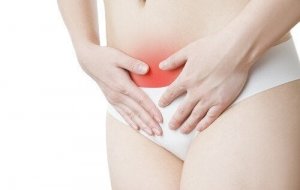What You Should Know About the Endometrium

The endometrium is the mucous membrane inside the uterus where the egg implants and grows during the first few weeks of gestation. It’s one of the three layers of tissue that line the inside of the uterus.
Characteristics of the endometrium
The endometrium also provides the conditions for the first morphological changes and the functions that relate to the cyclical release of sex hormones. That all happens up until the placenta is formed. Once the placenta is ready, its function is to transport nutrients and oxygen between the mother and fetus.
During puberty and menopause, when sex hormones aren’t active, the endometrium maintains its size and shape. After a woman’s first period, the uterus prepares itself for a fertilized egg every menstrual cycle.
To prepare for the egg, the endometrium grows to a thick, blood-vessel-rich tissue. If fertilization doesn’t happen, the body sheds the external (functional) layer of the endometrium, and it leaves your body in the form of period blood.
Phases of the endometrium
When the menstrual cycle starts, the endometrium goes through three phases that are easy to see on an ultrasound.
Menstrual phase
This is when the endometrium separates from the wall of the uterus – here, you can see a thin white line. Sometimes it’s possible to see it mixed in with menstrual blood. During this stage, the endometrium can measure between 1 to 3 millimeters. The uterus contracts during the menstrual phase, which is what makes the lining leave the body.
Follicular phase
Once the menstrual process is nearly over, this phase begins as a response to the stimulation to the egg. Here you can see three parallel lines that grow about 0.5 mm per day until they reach their normal size between 9 and 14 mm.

Luteal phase
This is also known as the post-ovulatory phase. This is when the endometrium is ready to receive the fertilized egg.
During this stage, progesterone thickens the three lines from the follicular phase so they can join the interior line. By the time menstruation starts, they form one homogenous line.
Illnesses that can affect the endometrium
Like any other part of the body, the endometrium is vulnerable to bacteria and protozoan attacks. If that happens, it can cause endometriosis, which is inflammation of the tissue.
One possible cause of inflammation is the use of IUDs. Endometriosis affects about 15% of women in their reproductive phase.
Women can also suffer from endometrial cancer. This serious condition involves different types of neoplasia or tumors that put the patient’s life at risk.
“The endometrium also provides the conditions for the first morphological changes and the functions that relate to the cyclical release of sexual hormones.”
Symptoms of endometriosis
The most obvious symptom is pelvic pain, but many women confuse this with regular menstrual cramps. Pain from endometriosis, however, can be so severe and debilitating that it noticeably affects women’s lives.
- The pain happens before, during, and after menstruation and lasts until ovulation.
- The pain can spread to your gut during your period. It can also cause pain when you pee.
- Some women experience pain in their lower back and after sex.
Other general symptoms are:
- Fatigue.
- Diarrhea or constipation.
- Abdominal distension and heavy, irregular bleeding.

Natural treatment for endometriosis
Considering how emotionally and physically draining this condition can be for patients, it’s a good idea to complement their medical treatment with some natural remedies. For example, you can stop eating processed food and eat more vegetables. Flaxseed is a great addition to your diet.
Studies show that applying progesterone cream can reduce the growth of abnormal tissue. Another thing that can help is keeping your stress levels under control and practicing mindfulness.
There are a lot of myths and misinformation about the endometrium, especially those related to endometriosis. That’s why it’s so important to be informed and know what to watch out for so you can seek out treatment as soon as possible.
The endometrium is the mucous membrane inside the uterus where the egg implants and grows during the first few weeks of gestation. It’s one of the three layers of tissue that line the inside of the uterus.
Characteristics of the endometrium
The endometrium also provides the conditions for the first morphological changes and the functions that relate to the cyclical release of sex hormones. That all happens up until the placenta is formed. Once the placenta is ready, its function is to transport nutrients and oxygen between the mother and fetus.
During puberty and menopause, when sex hormones aren’t active, the endometrium maintains its size and shape. After a woman’s first period, the uterus prepares itself for a fertilized egg every menstrual cycle.
To prepare for the egg, the endometrium grows to a thick, blood-vessel-rich tissue. If fertilization doesn’t happen, the body sheds the external (functional) layer of the endometrium, and it leaves your body in the form of period blood.
Phases of the endometrium
When the menstrual cycle starts, the endometrium goes through three phases that are easy to see on an ultrasound.
Menstrual phase
This is when the endometrium separates from the wall of the uterus – here, you can see a thin white line. Sometimes it’s possible to see it mixed in with menstrual blood. During this stage, the endometrium can measure between 1 to 3 millimeters. The uterus contracts during the menstrual phase, which is what makes the lining leave the body.
Follicular phase
Once the menstrual process is nearly over, this phase begins as a response to the stimulation to the egg. Here you can see three parallel lines that grow about 0.5 mm per day until they reach their normal size between 9 and 14 mm.

Luteal phase
This is also known as the post-ovulatory phase. This is when the endometrium is ready to receive the fertilized egg.
During this stage, progesterone thickens the three lines from the follicular phase so they can join the interior line. By the time menstruation starts, they form one homogenous line.
Illnesses that can affect the endometrium
Like any other part of the body, the endometrium is vulnerable to bacteria and protozoan attacks. If that happens, it can cause endometriosis, which is inflammation of the tissue.
One possible cause of inflammation is the use of IUDs. Endometriosis affects about 15% of women in their reproductive phase.
Women can also suffer from endometrial cancer. This serious condition involves different types of neoplasia or tumors that put the patient’s life at risk.
“The endometrium also provides the conditions for the first morphological changes and the functions that relate to the cyclical release of sexual hormones.”
Symptoms of endometriosis
The most obvious symptom is pelvic pain, but many women confuse this with regular menstrual cramps. Pain from endometriosis, however, can be so severe and debilitating that it noticeably affects women’s lives.
- The pain happens before, during, and after menstruation and lasts until ovulation.
- The pain can spread to your gut during your period. It can also cause pain when you pee.
- Some women experience pain in their lower back and after sex.
Other general symptoms are:
- Fatigue.
- Diarrhea or constipation.
- Abdominal distension and heavy, irregular bleeding.

Natural treatment for endometriosis
Considering how emotionally and physically draining this condition can be for patients, it’s a good idea to complement their medical treatment with some natural remedies. For example, you can stop eating processed food and eat more vegetables. Flaxseed is a great addition to your diet.
Studies show that applying progesterone cream can reduce the growth of abnormal tissue. Another thing that can help is keeping your stress levels under control and practicing mindfulness.
There are a lot of myths and misinformation about the endometrium, especially those related to endometriosis. That’s why it’s so important to be informed and know what to watch out for so you can seek out treatment as soon as possible.
All cited sources were thoroughly reviewed by our team to ensure their quality, reliability, currency, and validity. The bibliography of this article was considered reliable and of academic or scientific accuracy.
- Liu, J. Endometriosis. Manual MSD (Versión para profesionales).
- Aplin, John. (2018). Uterus—Endometrium. 10.1016/B978-0-12-801238-3.64654-8.
- Role and functional anatomy of the endometrium. Universités de Fribourg, Lausanne et Berne (Suisse).
This text is provided for informational purposes only and does not replace consultation with a professional. If in doubt, consult your specialist.








